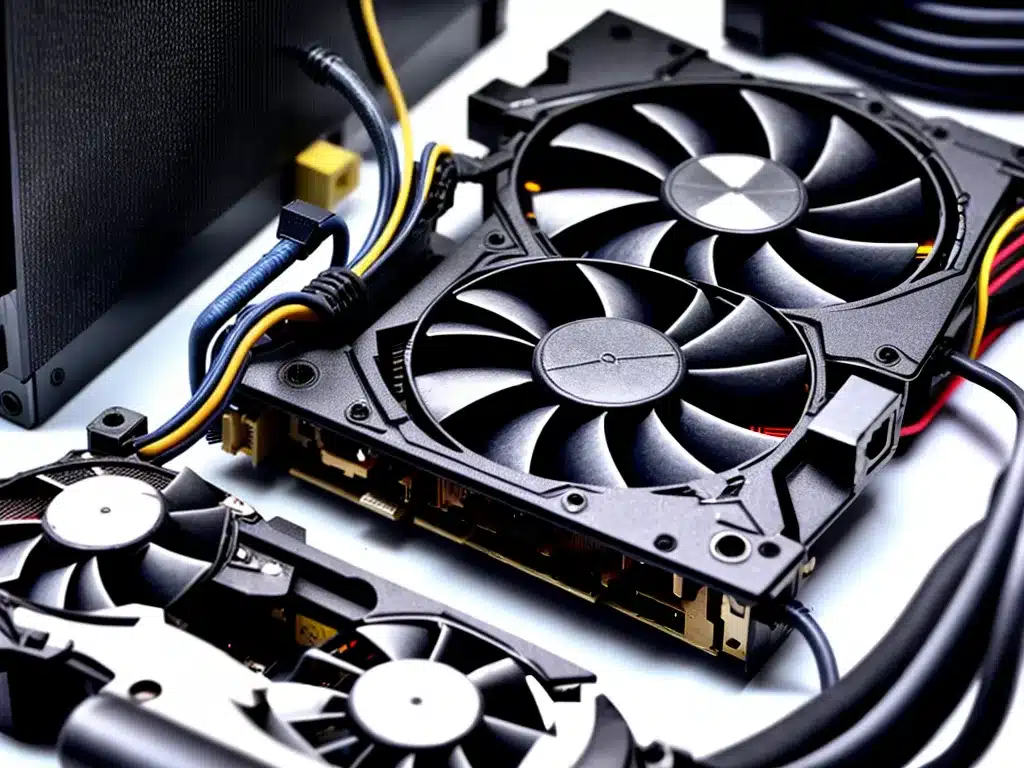
Coil whine is an irritating high-pitched noise that can come from components like graphics cards and power supplies in a computer. As an experienced PC builder and repair technician, I know how frustrating coil whine can be, so in this detailed guide I’ll explain what causes coil whine, how to diagnose it, and most importantly, how to fix or reduce it.
What Causes Coil Whine in a GPU or PSU?
Coil whine occurs when electromagnetic coils rapidly energize and de-energize inside electronic components. This causes the coils to vibrate and emit a high-frequency noise.
Graphics cards and power supplies contain many coils and are common sources of coil whine. Specific culprits include:
- Power chokes – Filter and regulate power on the cards
- Inductors – Manage current flow on circuit boards
- Transformers – Step-up/down voltages
Factors that increase chances of coil whine:
- High FPS rates in gaming
- Benchmarking/stress testing
- Older components with worn coils
- Power supplies running near max capacity
So in summary, coils whining is a natural side effect of normal operation, but high power draw and fluctuation exacerbates it.
Diagnosing if Graphics Card or PSU is Source of Coil Whine
To pinpoint if your GPU or PSU is whining, try these troubleshooting steps:
-
Listen closely to locate the noise source. Trace back along the graphics card power cables to see if noise gets louder near the PSU.
-
Stress test components individually. Use a GPU benchmark like FurMark on the graphics card, and a power supply tester tool for the PSU. See if whine increases under load.
-
Replace components like the PSU or GPU and see if noise disappears. This definitely confirms which part is the culprit.
-
Use software like HWiNFO to log component power draws, temperatures, clock speeds. Check for abnormalities under load.
Through process of elimination, you should be able to isolate the root source of the coil whine.
Potential Solutions if Graphics Card is Whining
If you’ve confirmed the GPU is whining, try these fixes:
-
Limit FPS with Vsync or FPS limiters to avoid excessively high frame rates.
-
Undervolt/underclock the GPU to reduce power consumption and fluctuation. Use software like MSI Afterburner.
-
Improve case cooling to lower GPU temps and avoid overworking coils. More case fans can help.
-
Tighten screws/brackets on GPU cooler mount, backplate, and PCIe slot bracket to reduce vibration.
-
Add sound dampening like rubber washers or silicone sealant to mounts to absorb vibration.
-
Replace thermal paste between GPU and cooler to improve heat transfer.
-
Upgrade GPU if old and degraded components are suspected.
Potential Solutions if Power Supply is Whining
For a PSU coil whine, these fixes may help:
-
Get a higher wattage PSU so it isn’t running at full load and straining.
-
Try a different PSU model if the specific design is prone to whine. Some use better components.
-
Use rubber mounts between PSU and case to absorb vibration and dampen noise.
-
Limit FPS/power draw like for a GPU to avoid PSU operating at max.
-
Improve case cooling so PSU isn’t working as hard.
-
Replace PSU if degraded or faulty parts are causing excess noise under load.
Advanced Modifications to Eliminate Coil Whine
If the above fixes don’t solve a stubborn coil whine, some advanced modifications may help as a last resort:
-
Replace whining coils – Identify bad coils on a GPU or PSU and replace them with new components. Requires soldering skills.
-
Coil whine absorbers – Use ferrite rings or adhesive to physically dampen vibrations from coils.
-
Sound dampening foam/pads – Strategically place inside case near whining components to absorb noise.
-
Liquid electrical tape – Apply over whining coils to reduce vibrations. But insulate carefully to avoid shorts!
-
Capacitors – Adding capacitors can help filter out ripple and fluctuation causing whine. Advanced mod.
These mods require electrical expertise, but may be necessary for extremely loud coil whine that persists.
Summary – A Fix is Often Possible with Patience
In closing, coil whine can often be mitigated, if not entirely fixed, through a combination of software tweaks, hardware changes, and physical noise damping modifications. Be systematic in diagnosing the root cause, and persistent in trying different solutions. With some patience and testing, you can likely reduce or resolve annoying coil whine issues from your GPU or power supply once and for all.












